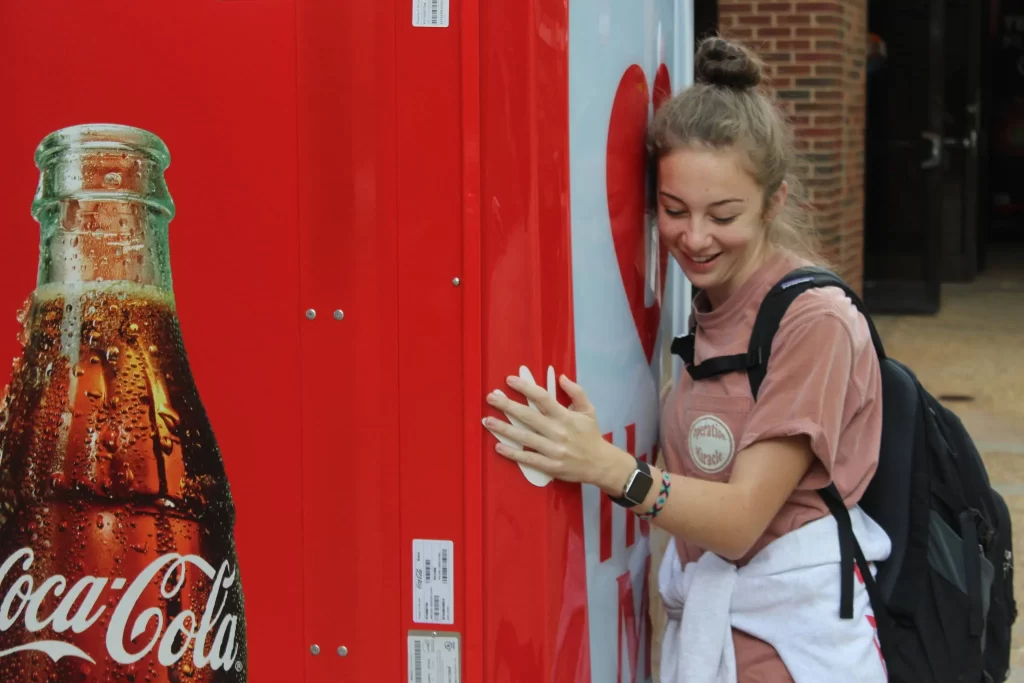In today’s fast-paced and highly competitive business landscape, traditional marketing methods are often not enough to make a lasting impact on consumers. As brands seek innovative ways to connect with their audience, experiential marketing has emerged as a game-changing strategy. Whilst exposure and awareness of them isn’t limited the real question is how to create successful experiential marketing campaigns and how does it fit within an experiential marketing strategy?

What is Experiential Marketing?
Experiential marketing, often referred to as engagement marketing, is an immersive strategy that focuses on creating unique and memorable experiences for consumers. Unlike traditional marketing approaches that rely heavily on one-way communication, experiential marketing seeks to establish a two-way interaction between the brand and its target audience. By appealing to the five senses, experiential marketing aims to forge a deep emotional connection with consumers, leaving a lasting impression on their minds. Beyond the tangibility of an experiential marketing campaign is the expectation that they must be tactile and therefore experienced face to face. This assumption however can be turned on its head with successful experiential marketing campaigns supported by experiential marketing software being curated right from within a home.
The Power of Engaging Experiences
At the core of experiential marketing lies the concept of engagement. It harnesses the power of interactive experiences to draw consumers into the brand’s story and values. Brands that embrace best experiential marketing campaigns understand that consumers don’t merely want to be passive observers but active participants in the marketing process.

Creating Memorable Experiences
Experiential marketing campaigns and experiential marketers employ various tactics to create memorable experiences for consumers. These experiences can take the form of interactive installations, a pop up shop, live demonstrations, augmented reality showcases, and more. By stepping away from the traditional sales pitch, a brand connects their audience with a carefully crafted narrative that aligns with their core values.

Understanding the Target Audience
A key aspect of successful experiential marketing campaigns is understanding the target audience. Brands must conduct in-depth research to identify the preferences, pain points, and aspirations of their potential customers. This knowledge serves as the foundation for designing experiences that resonate deeply with the intended audience.
Consider your audience an extension of your company, without them there are no sales or business. Whilst your target audience may be determined for your overarching company, experiential events provide the opportunity to appeal and connect with different audiences. The consideration of audiences as part of your event strategy should include two elements, determining the event audience and understanding how to target them.
Determine your event audience
Not only does hosting an experiential campaign provide opportunity to speak face to face with your target audience, it allows you to target different audiences and reach ones that you may have never considered. Ahead of the experiential marketing events, understand who you would like to connect with at the event by analysing your own data, researching the event and understanding your competitors.
Target your audience
Once the audience is determined your event marketing can begin to target these people in a hope to drive them onsite. Whilst this may fall into the marketing strategy, it is important to understand which networks and avenues you can reach your audience on to ensure you they can be transferred into ticket sales and attendees. Once you understand where you can target your audience it is also important to understand how to leverage off them. Think big picture on how to lean into their network for your type of event. Each one of your audience members has a network of whom may be an ideal attendee to your event.

Leveraging Digital Platforms
In the age of technology, digital platforms play a pivotal role in amplifying experiential marketing efforts. Brands can leverage social media, websites, and video content to extend the reach of their experiences beyond the physical realm. User-generated content, in particular, enables brands to harness the power of consumer advocacy, turning attendees into brand ambassadors.

Integrating Experiential Marketing with Traditional Methods
Experiential marketing does not exist in isolation; rather, it complements and enhances traditional marketing methods. By incorporating experiential elements into larger marketing campaigns, brands can create a cohesive and seamless brand experience for their customers. The use of landing pages, data tracking, and post-event surveys allows brands to measure the impact of their experiential initiatives and refine their strategies for future success.
Experiential Marketing Examples
Let’s explore some real-world examples of successful experiential marketing campaigns:
Coca-Cola’s Happiness Machine:
In this heartwarming campaign, Coca-Cola placed a special vending machine on college campuses that dispensed much more than just soda. The machine delivered surprise gifts, flowers, and even pizza to the students, spreading joy and capturing the heart of the community.

Nike’s Unlimited Stadium:
To promote its “Unlimited” line of products during the 2016 Rio Olympics, Nike built an interactive LED race track in the shape of a sole. Runners could challenge themselves and compete against an LED avatar, showcasing the brand’s commitment to pushing boundaries.

Red Bull’s Stratos Space Jump:
Red Bull took experiential marketing to new heights (literally) with Felix Baumgartner’s Stratos Space Jump. The daredevil jumped from the edge of space, creating an awe-inspiring experience that captured the world’s attention and showcased Red Bull’s brand identity of extreme adventure.

The Psychology of Experiential Marketing
Experiential marketing taps into various psychological principles to elicit a powerful emotional response from consumers. The sense of excitement, novelty, and participation triggers the release of dopamine, fostering positive associations with the brand. Additionally, the sense of exclusivity and authenticity associated with experiential campaigns can enhance brand loyalty and advocacy.
Engagement and Return on Investment
One of the biggest questions surrounding experiential marketing is its return on investment (ROI). Measuring the direct impact of experiential campaigns can be challenging, as their success often lies in building long-term brand loyalty and emotional connections. However, brands can employ various metrics, such as social media engagement, foot traffic, lead generation, and post-event surveys, to gauge the effectiveness of their initiatives.
Experiential marketing has revolutionised the way brands connect with consumers. By going beyond conventional advertising and prioritising meaningful interactions, experiential marketing has the power to leave an indelible mark on consumers’ hearts and minds. As brands continue to seek innovative ways to stand out in a crowded marketplace, experiential marketing will undoubtedly remain a powerful tool in their arsenal, bridging the gap between consumers and the brands they love.
